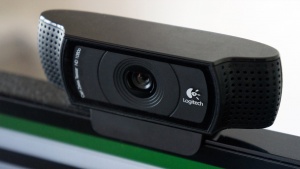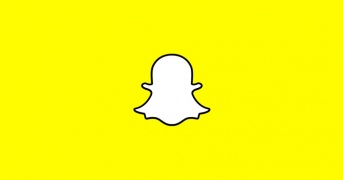Webcams
Recently, people has become more aware of the misuse of webcams as it can easily be used in malicious manners, ranging from breaches of privacy to blackmailing. The start of the decade marked the beginning of webcams being hijacked by black-hat hackers. This has become so common that a term has been coined for this specific type of hacking: camfecting.[2] The topic of camfecting has made appearances in popular media, having been covered by an array of TV shows and movies. Some of the most influential people in popular culture, especially in the area of technology, brought this topic to light.
The main ethical issues concerning webcams stem from the use of camfecting to breach users privacy, as well as the use of webcams for voyeurism/surveillance.
Contents
Common Uses
There is importance behind being able to see someone's face and natural reactions in real time. Because of this, users benefit from video chatting with loved ones or making business calls. Webcams allow people the ability to work remotely and maintain relationships with friends and family as it allows them to remain close. This is common with military families. In addition, webcams have been useful in the education sector as well. Many lecturers offer the option of recording the lecture and posting it online for their students to either live stream or watch at a later date. In addition, online training sessions and tutoring can be held via webcams [3].
Interview Systems
Most recently, webcams have been used to aid the hiring process. Many large corporations have a prerecorded question and give interviewees thirty seconds to prepare and then record their answers. While this process may seem more efficient, it has its own issues. Since the web system analyzes for body language facial expressions, the system flags people with uncontrollable twitches and other disabilities. This is being combatted by companies like HireVue. HireVue's application was designed using Value Sensitive Design in order to avoid biases that commonly occur with recruiting software. HireVue claims to be committed to retraining their AI to remove factors that lead to bias.
Popular Webcam Technologies
Just like other technologies, the popularity of webcam technology varies extremely between different user groups and changes constantly.
Some popular webcam technologies include:
- Skype, a digital and chatting technology created in 2003, was one of the first widely-used video chat platforms.
- Omegle is a chat website where users socialize by being anonymously paired together to video chat. Because of the nature of the platform and the fact that video chats were not monitored by the site, Omegle was full of profanity and nudity.
- Facetime is an Apple-specific video chat technology that enables users who both have Apple devices to chat with one another.
- Snapchat, created in 2011, is one of the most popular applications among smartphone users, especially in America. What started out as an app used to send disappearing photos, users can now send videos and even video chat live with one another.
- Houseparty was created in 2016 and quickly rose to a short burst of popularity among young Americans because it was one of the first video chat technologies that allowed multiple people to be in the same video chat.
Outstanding Instances
Robbins v. Lower Merion School District
In 2010, a student at Lower Merion High School in a suburb of Philadelphia, PA was punished in school for something he was caught doing at home. The school was only aware of what he did at home because he was using his school-issued laptop at the time, and the school took a photo through the computer's webcam. This led to the discovery that the school had taken almost 60K images with the protection of its no longer existent electronic monitoring policy.[4] The school district was sued for violation of privacy by the student's family, and they have ceased any tracking activity of its students.
Glasgow
In 2013, the privacy of a student in Glasgow, Scotland was compromised via her webcam while watching a DVD in her bath. BBC Radio 5, highlighted this incident as they had a live investigation discovering many websites of hackers trading photos and footage captured via webcam or selling these photos and footage.[5] This incident raises ethical concerns about privacy breaches and the immoral and non-consensual use of photos to generate a profit.
Russia
Webcams are being manufactured into more and more products, resulting in diverse environments for potential hackers. In 2014, a Russian website that had indexable categories of live stream footage from baby cameras to personal webcams were uncovered. Each stream was labeled by country it was from, and the specific location from which it was being broadcasted. The website ran advertisements on the page for monetization.[6]
Houston
In 2018, a hacker gained access to a webcam baby monitor in Houston, where he then began to spout “sexual expletives” and threats along the lines of “I’m going to kidnap your baby”. Similar instances were reported in different locations from cities in South Carolina, Minnesota, and Arizona.[7]
Preventative Measures
To prevent attacks, there are a number of precautions users may take to limit vulnerabilities from their devices. For external webcams, it is recommended that users only plug their device into a computer's USB port when it is actively in use. For internal webcams, simply securing a physical object in front of the lens to obscure the image when it is not in use is a reliable means of preventing attacks as well. Furthermore, installing anti-malware software and setting strong, secure passwords on one's device can be an especially good precaution to take if the user has a built-in webcam. Unintentional, malicious downloads can be avoided. It's optional to have webcam covers as well and to ensure notifications when a webcam is being used - even without you using it. [8] One doesn't have to be well known - a celebrity or in a position of power for these incidents to occur. It's important that people know how to limit their vulnerability to hacking via webcam.
References in Popular Culture
Black Mirror
The prevalence of camfecting has led to popular culture media referencing this phenomenon. A prominent example is the “Shut Up and Dance” episode of Black Mirror, Season 3. [SPOILER ALERT] In this episode, the main protagonist becomes a victim to camfecting while he is masturbating to child pornography. The hacker uses footage captured in order to blackmail him into doing a variety of activities, such as robbing a bank and even engaging in a fight that leads to the death of a stranger.[9] This episode raises a moral dilemma by revealing that the protagonist was actually viewing child pornography, making viewers ask the ethicality of humiliating someone via grey-hat, borderline black-hat hacking.
Mr. Robot
Mr. Robot is a widely watched TV show that covers camfecting. In episode 3, season 1, titled “eps1.2_d3bug.mkv”, one of the main characters' boyfriend has his webcam hacked into. The hacker records him and tells him that he has photos of his mistress.[10] The hacker uses this as leverage, blackmailing the character into spreading malware into a company’s computer system.
Ethical Issues
Privacy
The foundation for privacy relies on the fact that people respect one another. However, when this common trust is breached, we see major ethical problems. It is common for third parties such as Internet service providers, advertising companies, and security agencies to monitor the activity of internet users. Cookies, for instance, are one of the many avenues third parties will use to learn more about their users. However, due to the prevalence of physical hardware such as webcams and microphones which can be found on most modern tablets and laptops, users are now exposed to a layer of physical vulnerability each time they unlock their tablet or open their laptop. In this way, the internet acts as a channel for hackers to exploit this vulnerability and gain access to a physical dimension of people's lives that was previously not made readily available. For a malicious internet user, a webcam or a microphone may serve as the ideal channel through which they can spy on unsuspecting victims. More often than not, hackers have malicious intent, and users may walk away from an attack completely unaware that it had even occurred.
Hacking into a webcam to take photos or to stream live without the consent of the owner has been shown to be a task that is accessible for even average technology users. With the help of plug-ins, such as Meterpreter (a dynamically extensible payload that uses in-memory DLL injection stagers) and access to Wi-Fi, a hacker is easily able to take over a webcam without much programming knowledge.[11] Although most computers now have protective mechanisms that hinder this kind of intrusion, it is still very possible to remotely hack into a webcam. Even Apple laptops, which are notorious for being difficult to hack into, have been shown to be vulnerable to a webcam attack by researchers at John’s Hopkin’s, who demonstrated that it is possible to covertly capture images through iSight cameras on MacBooks and iMacs released prior to 2008.[2] Currently, it seem as if the only measure that is 100% foolproof is covering the camera itself.[12] It is also widely believed that the National Securities Agency has the ability to turn on webcams as well as built-in microphones without triggering the indicator light.[13]
Voyeurism
Voyeurism is the act of watching others participate in sexual behavior. This becomes a very relevant and large ethical concern when people use webcams to watch others without their consent. A breach of privacy and trust that is expected can lead to lack of trust from people. Voyeurism that goes "under" the radar is what Tony Doyle refers to as 'Perfect Voyeurism'. More specifically, perfect voyeurism is watching others engage in sexual behavior without being caught. Doyle mentions that the unethical part of voyeurism is exposed. Otherwise, if nobody knows this happens, it is 'perfect'. [14]
See Also
References
- ↑ “What Is a Webcam?” Computer Hope, 3 Aug. 2018. www.computerhope.com/jargon/w/webcam.htm.
- ↑ 2.0 2.1 “Camfecting.” Wikipedia, Wikimedia Foundation, 13 Jan. 2019, en.wikipedia.org/wiki/Camfecting.
- ↑ “What Are the Benefits of Having a Webcam ” Chron
- ↑ Nunnally, Derrick. “Second Suit over Lower Merion Webcam Snooping.” The Inquirer , 28 July 2010. https://www.philly.com/philly/education/20100728_Second_suit_over_Lower_Merion_webcam_snooping.html
- ↑ 'Horrified' Girl Spied on in the Bath by Webcam Hackers.” BBC News, BBC, 20 June 2013, www.bbc.com/news/av/technology-22986017/horrified-girl-spied-on-in-the-bath-by-webcam-hackers.
- ↑ “Is Your Webcam Allowing Hackers to Peer into Your Home?” The Telegraph, Telegraph Media Group, 20 Nov. 2014, www.telegraph.co.uk/technology/news/11242650/Is-your-webcam-allowing-hackers-to-peer-into-your-home.html. Wang, Amy B.
- ↑ “'I'm in Your Baby's Room': A Hacker Took over a Baby Monitor and Broadcast Threats, Parents Say.” The Washington Post, WP Company, 20 Dec. 2018, www.washingtonpost.com/technology/2018/12/20/nest-cam-baby-monitor-hacked-kidnap-threat-came-device-parents-say/.
- ↑ Saltzman, Marc. “Has Someone Hacked Your Webcam? Here’s How to Stop Cyber-Snoopers.” USA Today, 1 Mar. 2018. https://www.usatoday.com/story/tech/columnist/saltzman/2018/03/01/has-someone-hacked-your-webcam-heres-how-stop-cyber-snoopers/377676002/
- ↑ "Shut Up and Dance." Black Mirror, season 3, episode 3, October 21, 2016. Netflix.
- ↑ "eps1.2_d3bug.mkv." Mr. Robot, season 1, episode 2, July 8, 2015. Amazon Prime Video.
- ↑ “About the Metasploit Meterpreter.” Offensive Security, www.offensive-security.com/metasploit-unleashed/about-meterpreter/.
- ↑ “How Hackers Can Watch You Via Webcam | ODS Cybersecurity Services.” ODS - Cybersecurity, 5 May 2017, opendatasecurity.io/hackers-can-watch-you-via-your-webcam/. Saltzman, Marc. www.usatoday.com/story/tech/columnist/saltzman/2018/03/01/has-someone-hacked-your-webcam-heres-how-stop-cyber-snoopers/377676002/. Sparkes, Matthew.
- ↑ Zetter, Kim. “How to Keep the NSA From Spying Through Your Webcam.” Wired, Conde Nast, 3 June 2017 www.wired.com/2014/03/webcams-mics/
- ↑ “Perfect Voyeurism” Tony Doyle







